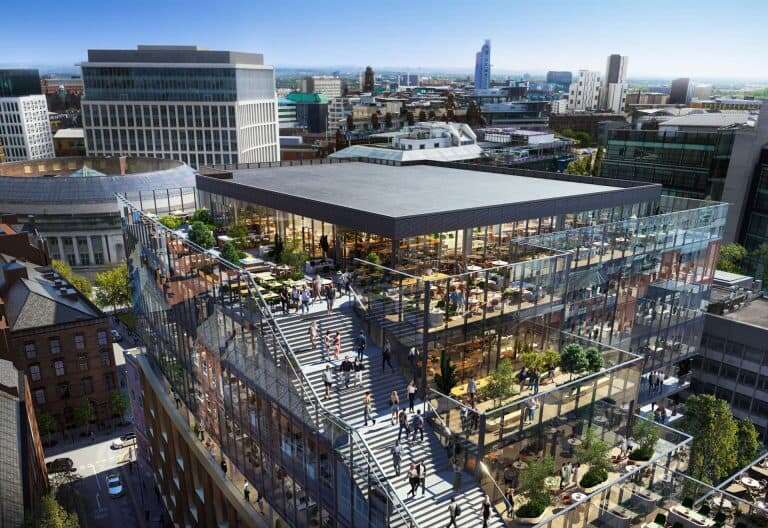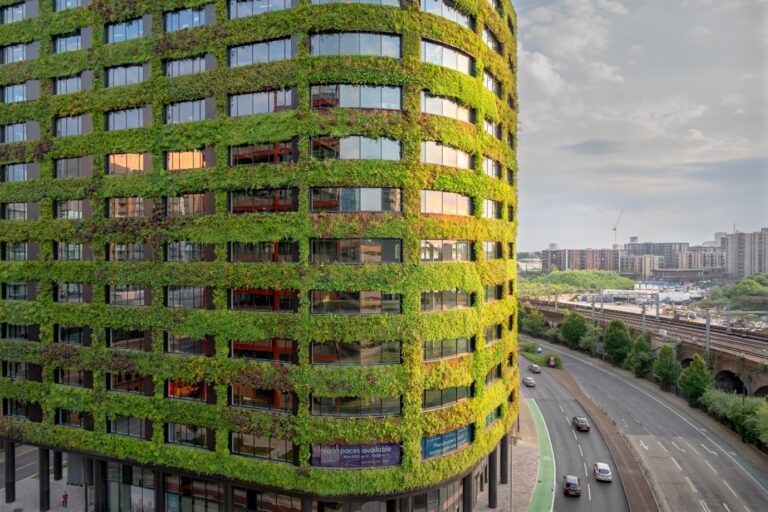Building Safety Act 2022
Lewis Mills | 25 November 2022THE BUILDING SAFETY ACT (2022)
On the morning of 14th June 2017, Grenfell Tower, a 23-storey residential apartment block in North Kensington, West London, burst into flames claiming 24 lives.
At around 1am, a small kitchen fire had broken out on the fourth floor and within minutes, the fire had ascended through the building’s external cladding and had spread to all four elevations, engulfing all those inside.
By 3am, most of the upper floors were alight. Whilst sixty 65 people were rescued, the disaster claimed 24 fatalities – all to the top floor of the tower.
Following a five year review of the tragedy, on the 28th April 2022, the Building Safety Act (2022) was published into UK legislation.

What caused the Grenfell Tower Disaster?
Grenfell had been poorly designed. Designers of the tower block had not considered the ability for fire to spread through the external façades, and only accounted for the internal spread of fire within the building.
What made this design flaw so fatal was that the external cladding used throughout the building’s façades was ferociously combustible, specifically the polyethylene plastics used within the cladding panels, which have since often been described as “solid petrol”.
Why was the Building Safety Act (2022) created?
To prevent a tragedy of this nature reoccurring, the Building Safety Act (2022) was created, implementing stricter regulations for developers to follow in residential or mixed-use buildings.
In addition, the Act aims to establish a platform by which residents can have a stronger say on residential developments. The Golden Thread has long been a theoretical example of the perfect building lifecycle, whereby the critical details of a building are readily available to everyone involved, whether directly or indirectly, in the building’s management and safety. The framework, however, is rarely implemented throughout the construction industry.
The Act aims to standardise this framework, requiring all duty holders to enforce and maintain the principles of the golden thread at all times, thereby ensuring that building safety remains at the forefront of the construction industry.
What buildings does the Act apply to?
All existing buildings either over 18m in height or with 7 or more storeys containing two or more residences will need to be registered with the Building Safety Regulator. The registration window will commence in April 2023 and will run for 6 months.
What does the Act do?
The Act will require Responsible Persons of multi-occupied residential buildings with two or more sets of domestic premises to update their fire risk assessment to include an assessment of the building’s structure, external walls, and flat entrance doors.
The Act:
• aims to provide residents and homeowners more rights, powers, and protections – so that homes across the UK are safer.
• provides much-needed protection for qualifying leaseholders from the costs associated with remediating historical building safety defects, instead introducing measures by which those responsible are held to account.
• overhauls existing regulations and makes clear how residential buildings should be constructed, maintained, and made safe.
• creates three new regulatory bodies to provide effective oversight over the new legislation; the Building Safety Regulator; the National Regulator of Construction Products (NRCP) and the New Homes Ombudsman. The NRCP will oversee a more effective construction products regulatory regime and lead and co-ordinate market surveillance and enforcement in this sector across the UK. The NRCP has already started taking enforcement action under the scope of existing regulations.
• places emphasis on the safety of the intended building to be addressed at planning stage and again at practical completion and extends the limitation period for claims under the DPA (Defective Premises Act) 1972 from 6 years to 15 – 30 years depending on which section the claim is brought under.
• defines a building’s safety risk very clearly. This risk is in direct relation to the likelihood a fire can spread, and in turn cause failure in some part to the building. The spread of fire is defined by the spread of all forms of combustion, for example smoke, fumes, and heat.
• introduces new roles and responsibilities for people who manage occupation, within higher-risk residential buildings. Although the Act has become legislation, these duties have not come into force yet within already occupied higher-risk residential buildings. If property owners manage higher-risk residential building, they need to prevent any building safety incidents and reduce the severity of an incident if one occurs.
• introduces a new role – the Building Safety Regulator (BSR). The BSR seeks to create a new safety regulatory role, to toughen the stance on property owners and to furthermore, strip combustible cladding from the buildings to reduce the chances of fire spreading through external elements of the structure and fabric. The Building Safety Regulator (BSR) will oversee the safety and performance of all buildings, as well as having a special focus on high-rise buildings. It will promote competence and organisational capability within the sector including for building control professionals and tradespeople.
– This impact of the Act will also see other sectors affected as building within the Commercial sector are also by default being more stringent on the combustibility of the external cladding being specified for buildings.
• instructs qualifying owners to register their property with the BSR, undertake a risk assessment, create measures to manage building risks and to create a safety case report of their building. This an invaluable introduction made by the Building Safety Act, because it allows owners of properties to have a much better management over the occupants within the building, and therefore create a much safer environment for people to live/work within.
Together these changes mean qualifying owners will manage their buildings better, and the home-building industry has the clear, proportionate framework it needs to deliver more, and better, high-quality homes.
Many of the detailed provisions in the Act will be implemented over the next two years through a programme of secondary legislation as and when it is approved by Parliament.
The Building Safety Act 2022 can be viewed in full here – The Building Safety Act – GOV.UK (www.gov.uk)
If you require any further information, please contact a member of the OBI Buidling Consultancy Team.
Related articles

Why Manchester’s Workers Are Fleeing Their Homes and Flocking Back to the Office
18 October 2024I remember sitting up in bed at university, about to log into my first online lecture. After a summer of lockdowns and minimal social interaction, getting back to university felt like a relief. While Covid had plenty of downsides, one silver lining seemed to be the end of mandatory in-person lectures. I rolled out of […]

Channel 4 signs on for St Michael’s
16 October 2024OBI is delighted to confirm that all of the office space at the forthcoming £120m Manchester office block from Gary Neville’s Relentless Developments has now been pre-let. Channel 4 has taken a 10-year lease for 12,293 sq ft at St Michael’s eighth floor, sharing half of the floor with Pinsent Mason. When the building completes […]

The New UK Net Zero Carbon Buildings Standard: What It Means for the Real Estate Industry
10 October 2024In 2020, OBI published a paper titled “Building Accreditations – A Developer’s Guide”. At the time, building design was evolving rapidly on the back of the pandemic, with landlords, investors and developers unsure which would be valued by the occupational market and the impact that they would have on rental value, void periods and the […]